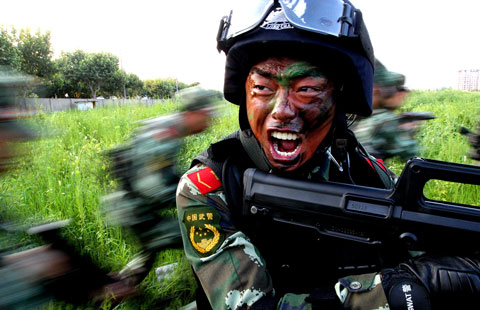
Over the last half-century, the world has been undergoing a "great convergence", with per capita incomes in developing countries rising almost three times faster than those in advanced countries. However, developments in 2013 have revealed that the open trade regime that has facilitated this progress is now under grave threat, as stalemate in multilateral trade negotiations is spurring the proliferation of preferential trade agreements (PTAs), including the two biggest ever negotiated - the Trans-Pacific Partnership and the Trans-Atlantic Trade and Investment Partnership.
The rules and norms arising from the General Agreement on Tariffs and Trade and its successor, the World Trade Organization, have underpinned the export-led growth model that has enabled developing countries to lift millions of people out of poverty. The irony is that large developing economies' rise to systemic significance is at the heart of the current deadlock in multilateral trade negotiations.
Advanced countries argue that emerging economies should embrace reciprocity and establish trade regimes similar to their own. Emerging economies counter that their per capita incomes remain far lower than those of their developed counterparts, and insist that addressing their enormous development challenges demands flexibility in terms of their trade obligations. The resulting stalemate has impeded meaningful discussion of the main issues - including non-tariff measures, export restrictions, electronic commerce, exchange rates, and the trade implications of climate-change-related policies -raised by an open global economy.
Against this background, mega-PTAs seem poised to re-shape world trade. The Trans-Pacific Partnership negotiations involve a dozen Asian, Latin American, and North American countries, including Japan, Mexico, and the United States, while the Trans-Atlantic Trade and Investment Partnership would encompass the world's two largest economies, the European Union and the US. Sixteen Asia-Pacific countries are involved in the Regional Comprehensive Economic Partnership negotiations.
Such PTAs are said to have the potential to improve conditions well beyond the borders of the countries involved. If either the Trans-Pacific Partnership or the Trans-Atlantic Trade and Investment Partnership produces meaningful reforms to trade-distorting farm subsidies-becoming the first non-multilateral agreement to do so - the benefits will be truly international. But the PTAs that are being negotiated, or now exist, focus more on regulatory issues rather than tariffs, and therefore require participants to reach agreement on a wide range of rules covering, for example, investment, fair competition, health and safety standards, and technical regulations. This presents a number of obstacles. While some non-tariff measures might be easy to dismiss as protectionist, many others serve legitimate public-policy objectives, such as consumer safety or environmental protection, making it difficult to ensure that they do not conflict with the basic principles of fairness and openness.
Moreover, such agreements can lock various groups into different regulatory approaches, raising transaction costs for domestic traders and making it difficult for external goods and services to penetrate the bloc. Such market segmentation could disrupt supply chains and lead to efficiency-damaging trade diversion.








